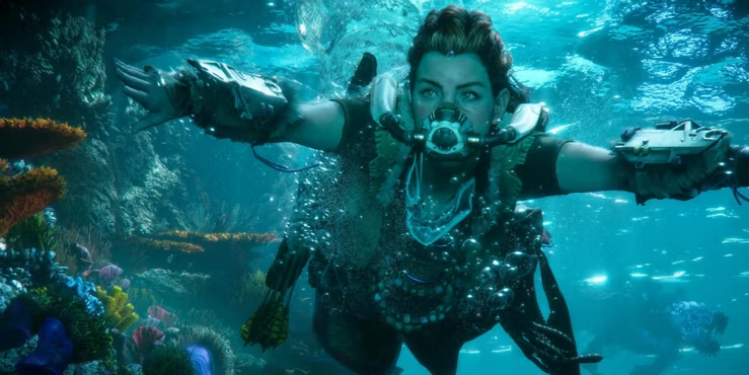Virtual Reality (VR) has continued making waves across various sectors – from gaming to education to real estate. As the world steadily shifts from conventional experiences to digital encounters, the realm of acting is not exempt from this transformative tide. For actors, VR presents a new frontier, one where traditional methods merge with the digital, creating a unique blend of skill and technology.
Technological Challenges of VR Acting
VR provides a distinct departure from the conventional stage or screen, where physical presence, lighting effects, and real-time exchanges prevail. Instead, it offers an all-encompassing encounter that heavily relies on a digitally fabricated setting. This transformation poses both difficulties and prospects for actors.
Motion Capture: VR acting often requires the use of motion capture technology. Unlike traditional acting where subtle facial expressions or body movements can convey powerful emotions, motion capture can sometimes miss these nuances. As a result, actors need to exaggerate their movements and expressions so the technology can catch and translate them accurately into the virtual space.
Spatial Awareness: In a VR environment, the conventional physical cues might be absent. An actor might not have physical props or co-stars to interact with, requiring them to use their imagination more intensively and anticipate interactions in a virtual context.
Technical Glitches: As with any technology, there can be technical glitches. Delays, software issues, or calibration mishaps can affect the virtual environment. Actors need to be adaptable and patient, understanding that retakes might be caused by technical rather than performance issues.

Where Gaming Meets Acting
This is one of my favorite things to talk about – gaming.
The boundary separating gaming from acting blurs within the virtual reality landscape. With games embracing richer narratives, actors infuse their voices, facial expressions, and bodily actions into in-game characters, amplifying the authenticity of the player’s experience.
Interactivity: Unlike movies or stage performances where the story is linear, VR often offers branching narratives. Actors need to be prepared for multiple outcomes and be versatile enough to adapt to different story paths. (Branching Narratives refer to storytelling structures that allow for multiple pathways or outcomes based on choices made by the reader, viewer, or, in the case of video games, the player. These choices can lead to various endings, plot developments, or character interactions. A hallmark of interactive media, branching narratives empower audiences to have a direct influence on the progression and outcome of a story, making each experience potentially unique. Popular in choose-your-own-adventure books and narrative-driven video games, they provide depth and replayability to the content.
Voice Acting: As is evident from games, voice acting is a crucial skill in the VR world. With the visual cues being different, an actor’s voice plays an essential role in conveying emotion and progressing the story.
Physicality: While it might seem that VR is all about digital representation, the actor’s physicality remains essential. Their movements, even in a digital environment, need to be realistic and believable.
For Those at Home
Motion Capture suits are still expensive. Not a big deal for studios, but what if you want to do motion capture at home?
We found this entertaining video that explores how you can use iPhones and a software called Move.ai to motion track yourself. We have not tested this software, so if you decide to check it out, please follow us at DirectSubmit / NYCastings and let us know how you made out!
Emotional Connectivity in the Virtual Space
While VR offers an expansive environment to play within, one of the primary concerns for actors is maintaining emotional connectivity. In traditional acting, the relationship between the actors and their audience or fellow co-stars is tangible and immediate. In VR, that direct connection can sometimes feel abstracted.
Finding Authenticity: An actor’s ability to genuinely connect with their digital environment is crucial. This might mean spending more time understanding the virtual world they’re operating in or using specific methods to visualize and interact with invisible elements until they become second nature.
Embracing Feedback: In VR, feedback isn’t always immediate. Actors may have to rely on their own judgment of performance quality in the absence of a live audience. This might require new training methodologies or tools to help actors understand the virtual audience’s response.
Bridging the Gap between Traditional and Virtual
Many actors transitioning to VR might feel overwhelmed by the technological aspects. However, drawing parallels between traditional methods and VR experiences can make this shift more comfortable.
Method Acting: Just as method actors immerse themselves in the experiences of their characters, VR actors can benefit from familiarizing themselves entirely with the virtual worlds they inhabit. By understanding the history and logic of these digital spaces, actors can ground their performances in authenticity.
Physical Training: VR may be a digital platform, but the importance of an actor’s physical training remains. Breath control, posture, and movement can translate even in a virtual environment, especially when motion capture is involved.
The Blurred Boundaries of Reality and Virtuality
As VR technology improves, the line between reality and the virtual realm becomes increasingly thin.
Moral and Ethical Considerations: Deeply immersive VR experiences can have profound psychological impacts. As actors become ambassadors of these virtual narratives, they might need to navigate complex moral and ethical situations, ensuring that their performances don’t inadvertently harm or unduly influence their audiences.
Protecting the Self: Deep dives into virtual roles might sometimes blur one’s sense of self. Actors must prioritize self-care and set boundaries to ensure their mental and emotional well-being.
The Future Potential of VR Acting
The horizon of VR acting is broad and expansive. As technology evolves, so will the opportunities and avenues for actors.
New Genres: Just as the introduction of film led to genres like silent movies or talkies, VR will give rise to new genres. This could be entirely immersive plays where the audience is part of the story or interactive movies where the viewer can influence outcomes.
Global Reach: VR productions have the potential to reach a global audience instantly. Actors can perform for someone on the other side of the world, making their skills more accessible and expanding their fan base.
Training: Virtual Reality can also be a boon for training budding actors. VR acting classes can immerse students in a variety of scenarios, giving them a wide range of experiences in a short time.
Hybrid Performances: As theaters look for novel ways to attract audiences, we could witness a rise in hybrid performances where VR merges with traditional theater, offering a unique and unparalleled experience to viewers.
As the world of VR acting unfolds, actors stand at the cusp of a revolution. The journey will require patience, adaptability, and continuous learning. For those willing to venture forth, the rewards — both artistically and professionally — promise to be immense. Actors, prepare to don your VR headsets and delve into a different universe of storytelling. The future awaits.







